Chinese Mayapple Podophyllum delavayi

ABOUT
The plant commonly referred to as the Chinese Mayapple is an intriguing perennial plant renowned for its unique and attractive foliage and flower formation. It showcases umbrella-like leaves that are deeply lobed and radiate outwards, typically in a circular or hexagonal pattern to form a canopy-like appearance. These leaves are often glossy, adding a lustrous texture to the plant's visual presentation. The color of the leaves can vary, but they often possess a rich green hue that may be tinged with reddish or bronze tones, especially when the leaves are young or when they emerge in spring. As the seasons change, the foliage can also transform, providing a display of different colors throughout its growing period. Beneath the impressive foliage, the flowers of the Chinese Mayapple are no less remarkable. The blooms are usually solitary and dangle elegantly below the leaves, remaining somewhat hidden and giving the plant a mysterious allure. The flowers possess a bell or cup-like shape and are composed of several overlapping petals that can create a striking appearance. The color palette of these blossoms ranges from a deep maroon to a purple or reddish hue, exuding an air of exoticism and rarity. As the plant matures, the flowers may give way to the production of fruit, which usually remains concealed beneath the canopy of leaves. The fruits often have a fleshy texture and may attract various wildlife to the garden. Overall, the Chinese Mayapple captivates onlookers with its sculptural foliage and hidden, yet beautifully colored flowers, providing a surprising element in a shade garden or shaded area where it prefers to thrive.
About this plant
 Names
NamesFamily
Berberidaceae
Synonyms
Delavay's Mayapple, Chinese Mayapple
Common names
Podophyllum delavayi.
 Toxicity
ToxicityTo humans
Chinese mayapple (Podophyllum delavayi) contains podophyllotoxin, a toxic compound that can cause severe symptoms if ingested. Toxicity is present in all parts of the plant, but especially in the roots and unripe fruit. Symptoms of poisoning can include intense gastrointestinal distress (nausea, vomiting, diarrhea), severe throat pain, difficulty in swallowing, fever, headache, and in severe cases, it could potentially lead to organ failure or death due to its cytotoxic effects. Immediate medical attention is essential if any part of this plant is accidentally ingested.
To pets
Chinese mayapple (Podophyllum delavayi) is similarly toxic to pets as it is to humans. It contains podophyllotoxin, which is harmful if any part of the plant is eaten by an animal. Symptoms of poisoning in pets may include vomiting, diarrhea, lethargy, drooling, difficulty breathing, tremors, and in severe cases, seizures or coma can occur. The toxicity can also lead to potentially fatal complications such as multi-organ failure. Urgent veterinary care is crucial if a pet ingests any part of this plant.
 Characteristics
CharacteristicsLife cycle
Perennials
Foliage type
Deciduous
Color of leaves
Green
Flower color
Red
Height
1-2 feet (30-60 cm)
Spread
1-2 feet (30-60 cm)
Plant type
Herb
Hardiness zones
7
Native area
China
Benefits
 General Benefits
General Benefits- Ornamental Value: Podophyllum delavayi, commonly known as Chinese Mayapple, is prized for its attractive foliage and flowers, providing aesthetic enhancement to gardens and landscapes.
- Shade Tolerance: This plant thrives in shady conditions, making it a suitable ground cover for wooded areas or gardens with limited sunlight.
- Easy Maintenance: Chinese Mayapple requires minimal care once established, making it a low-maintenance option for gardeners.
- Naturalizing: It can spread to form colonies, thus making it effective for naturalizing in suitable climates and conditions.
- Seasonal Interest: With its unique umbrella-like leaves and distinctive flowers, it adds seasonal interest to gardens, particularly in the spring and early summer.
- Wildlife Attraction: The flowers and fruits can attract pollinators and other wildlife, contributing to biodiversity in the garden ecosystem.
 Medical Properties
Medical Properties- This plant is not used for medical purposes.
 Air-purifying Qualities
Air-purifying QualitiesThis plant is not specifically known for air purifying qualities.
 Other Uses
Other Uses- Podophyllum delavayi, commonly known as the Chinese Mayapple, can be utilized as a natural pest deterrent in gardens due to some of its components that pests find undesirable.
- The dense foliage of the Chinese Mayapple provides a hiding place for small beneficial insects and animals, which can be an integral part of a garden's ecosystem.
- The unique berries of the plant are sometimes used in ornamental displays, though they should be kept out of reach of children and pets due to their toxicity.
- The plant's large leaves can serve as a natural mulch, helping to retain soil moisture and suppress weed growth when they fall off and decompose.
- In the realm of photography and art, the Chinese Mayapple can be a subject for botanical illustrations and photography due to its visually interesting features.
- Because of its distinctive appearance, the Chinese Mayapple is used in landscape design as a groundcover to create contrasting textures and shades in shaded garden areas.
- The Chinese Mayapple can act as a natural soil stabilizer in shaded areas due to its spreading nature and the dense root system.
- For educational purposes, this plant can be used to teach botany students about rhizomatous plants and their structures and adaptations.
- Chinese Mayapple can be incorporated into theme gardens such as 'woodland gardens' or 'fairy gardens' due to its whimsical and forest-like appearance.
- Cultivars of the Chinese Mayapple, with variation in leaf patterns and colors, can be collected by enthusiasts interested in rare and unusual plants.
Interesting Facts
 Feng Shui
Feng ShuiThe Chinese mayapple is not used in Feng Shui practice.
 Zodiac Sign Compitability
Zodiac Sign CompitabilityThe Chinese mayapple is not used in astrology practice.
 Plant Symbolism
Plant Symbolism- Rarity: As Podophyllum delavayi, also known as Chinese Mayapple, is not commonly found in every garden, it may symbolize rarity or uniqueness.
- Medicinal Value: Given that the Mayapple plant has been used in traditional medicine, it can symbolize healing or the importance of health.
- Protection: The umbrella-like shape of the Mayapple's leaves can represent shelter and protection, not unlike how the leaves protect the fruit underneath.
- Fertility: With its fruit-bearing characteristic, the Chinese Mayapple may symbolize fertility or abundance.
- Toxicity: As various parts of the plant are toxic, it might be seen to symbolize danger or caution when handling unknown or deceptive situations.
- Grounding: The low, ground-hugging nature of the Chinese Mayapple can represent staying grounded or connected to one's roots.
 Water
WaterThe Chinese Mayapple prefers evenly moist soil, so watering should be done consistently. Aim to water this plant deeply once a week with about 1-2 gallons, depending on the size of the plant and environmental conditions. During the growing season, in spring and summer, make sure the topsoil doesn't completely dry out between waterings. However, reduce the frequency of watering in the fall and further in winter to prevent waterlogging, as the plant is dormant during this period. Always check the soil moisture with your finger; if the top inch is dry, it's time to water.
 Light
LightThe Chinese Mayapple thrives best in partial to full shade. It should be protected from direct, harsh sunlight, which can scorch the leaves. A spot under a canopy of trees or a shaded garden area that receives dappled sunlight would be ideal for this plant. Make sure it does not receive prolonged periods of hot afternoon sun, which could be detrimental to its health.
 Temperature
TemperatureThe Chinese Mayapple is hardy and can withstand temperatures down to about 5 degrees Fahrenheit but prefers a climate where temperatures remain between 50 and 75 degrees Fahrenheit for optimal growth. It is not suited for extreme heat and should be shaded and watered adequately if the temperature rises significantly above this range. Duration of exposure to temperatures close to its minimum tolerance can affect the plant's health.
 Pruning
PruningPruning the Chinese Mayapple is typically done to remove dead or damaged foliage and to maintain a tidy appearance. Pruning should be done after flowering, which generally occurs in late spring or early summer. Cut back the foliage to the ground in late fall or early winter as the plant dies back. Pruning is not necessary for the health of the plant but can be done annually for aesthetic reasons.
 Cleaning
CleaningAs needed
 Soil
SoilThe Chinese Mayapple prefers a well-draining, humus-rich soil mix with a slightly acidic to neutral pH of 5.5 to 7. The best soil mix can be made of equal parts loam, peat, and perlite to ensure good drainage and moisture retention.
 Repotting
RepottingChinese Mayapple should be repotted every 2 to 3 years in spring. The process should be gentle to avoid root damage, and fresh soil should be provided to replenish nutrients.
 Humidity & Misting
Humidity & MistingChinese Mayapple thrives in moderate to high humidity levels, ideally between 40% to 70%. Consistently high humidity supports its lush foliage growth.
 Suitable locations
Suitable locationsIndoor
Use rich soil, moderate water, and bright indirect light indoors.
Outdoor
Plant in moist, shaded area with rich soil outdoors.
Hardiness zone
7-9 USDA
 Life cycle
Life cycleFor the Chinese Mayapple (Podophyllum delavayi), the life cycle starts with seed germination, which typically occurs in a cool, moist environment. The plant then develops a rhizome that stays dormant through the winter and gives rise to a shoot in the spring. This shoot grows into a leaf-bearing stem with umbrella-like leaves and, eventually, the plant will produce solitary, nodding flowers which are usually reddish or purple. After pollination, typically by insects, the flowers develop into fleshy, egg-shaped fruits. Once the fruits mature, they are dispersed by animals or gravity, which in turn allows the seeds to spread and potentially germinate, completing the cycle. With time and favorable conditions, these new plants will mature and contribute to the propagation of the species.
 Propogation
PropogationPropogation time
Spring
The most popular method for propagating Podophyllum delavayi, commonly known as Chinese Mayapple, is by seed. The best time to sow the seeds is in the fall, directly after they are ripe to coincide with their natural germination cycle. The seeds have a double dormancy; firstly, they require a warm period of 2-3 months, followed by a cold period of about the same duration to break the dormancy. After the cold stratification, with the arrival of spring, seeds may begin to germinate. Sowing the seeds in a cold frame or an unheated greenhouse can protect them from severe weather while maintaining the necessary conditions. Because the germination process is naturally lengthy, patience is vital when growing Chinese Mayapple from seed. Seedlings may take several years to flower, so this method, while popular, is best suited for gardeners who enjoy long-term projects.
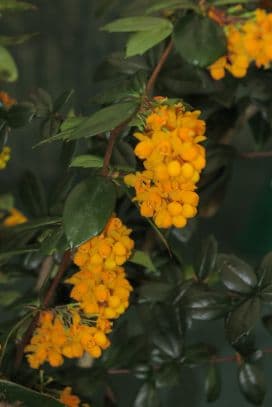
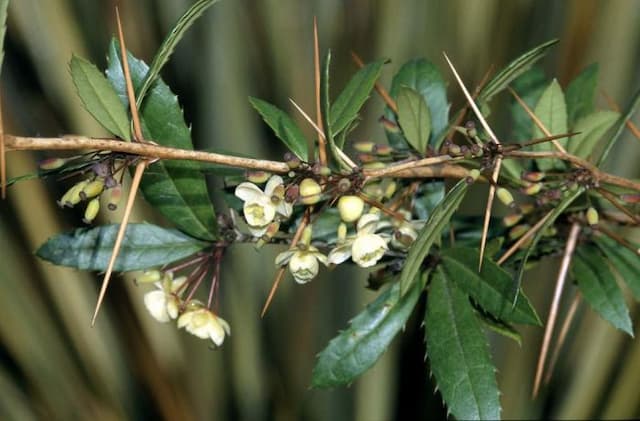
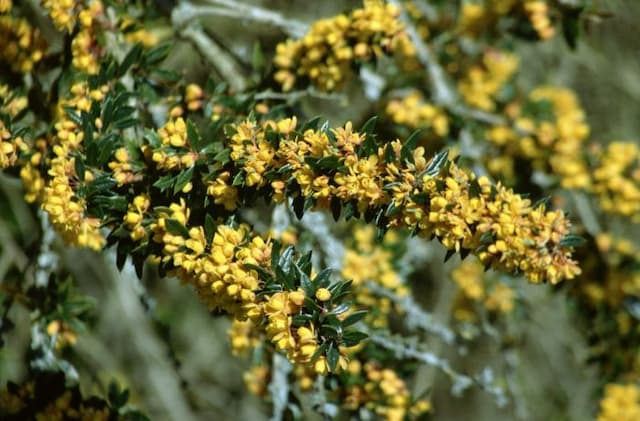
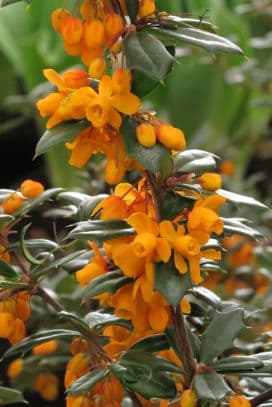
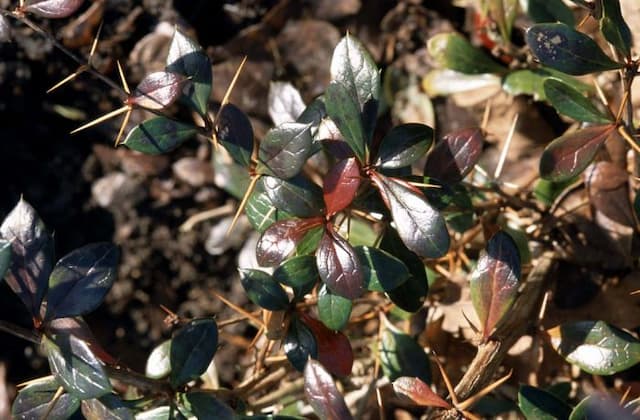



![Japanese barberry [Bonanza Gold]](/_next/image?url=https%3A%2F%2Fplants-admin.emdemapps.com%2Fimages%2Fplants%2F%2Fimages%2F604b5385e413f.png&w=640&q=75)
